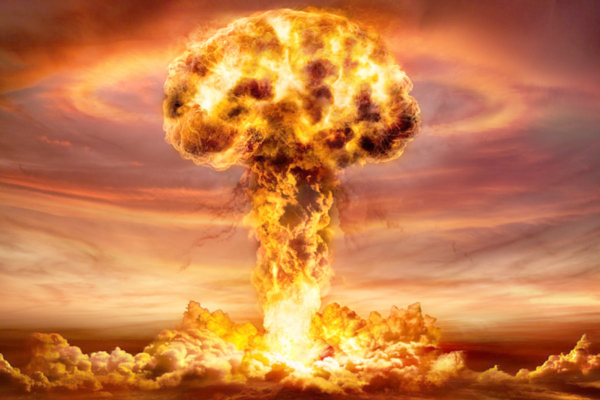Chinese scientists use computer simulation to update understanding of impacts on bombproof underground sites
Depending on distance from blast, bunkers could be subject to two waves of destruction, study finds
By Stephen Chen
A nuclear blast equation used by the US military for decades to guide the construction of bombproof shelters is not always accurate, according to a new study by Chinese researchers. The equation estimates the impact on the ground following a nuclear weapon explosion, but computer simulations found the results could be unreliable if the blast occurred close by, potentially making the underground structure vulnerable.
“The larger the explosion, the smaller the distance or depth, the greater the error,” according to the team, led by Professor Rong Jili from the Beijing Institute of Technology, in a paper published in the Journal of China Ordnance on Monday. The study was conducted in collaboration with researchers from the China Academy of Launch Vehicle Technology, the country’s largest developer of intercontinental ballistic missiles.
Beijing has promised not to use nuclear weapons in a pre-emptive strike, but has not ruled out using them in retaliation which would require launch sites and command headquarters to survive the initial wave of destruction in any attack. Rong and his colleagues simulated the blast of a small nuclear bomb equivalent to 500 tonnes of TNT with the latest mathematical model on a computer.
The results matched very well with the US military’s equation most of the time, but deviated sharply in areas close to the epicentre. The same thing happened when they compared the equation’s estimates to real-life data from an experiment conducted by the US military themselves. The results showed that higher-than-expected distortions in soils and rocks generated by the nuclear blast could lead to structural failure in underground facilities, according to the researchers.
“With the development of weapons technology and deepening understanding of the effects of nuclear explosion, the ground shock effect produced by explosions has attracted widespread attention and is considered to be the greatest threat to underground structures,” Rong said, in the paper. China stopped testing nuclear weapons in 1996 but its efforts to develop new weapons or countermeasures have continued on supercomputers and research facilities that can simulate nuclear blasts.
Accidents have also provided valuable data to researchers, including the massive explosion at a chemical warehouse in the port of Tianjin in 2015, which killed 173 people. According to a separate paper, the explosion generated shock waves similar to those produced by tactical nuclear weapons. Scientists used the information gathered in the aftermath of the blast to improve their estimates on the ground shock effects from nuclear warfare.
Rong’s team said the equation was imperfect because it was based on experimental data dating back to the early 1960s. In those early experiments, motion detectors buried near the explosion site could be thrown above ground, missing the true extent of the deformation that took place underground.
According to Rong’s simulation, the ground would absorb a significant amount of the destructive power of a nuclear explosion, propagating the energy down and outward like an earthquake. But the blast would also generate shock waves in the air travelling faster than the earthquake which could also hit the ground and damage underground structures.
A military or civilian bunker would therefore meet two waves of blasts, Rong said. The closer to the bomb, the greater the impact of the air shock wave. For more distant structures, the major damage would be caused by the earthquake. While the new study highlights the previously little understood role of airborne shock waves, the earthquake risk is not to be ignored.
A nuclear test in the Nevada desert in the late 1960s created a one-metre wide underground rupture more than 6km from the test site, according to a previous study. China is believed to have a considerably smaller warhead stockpile than either Russia or the US, but some of the world’s largest and most advanced research facilities which could be used to develop a new generation of nuclear weapons are under construction there.
Although the US has conducted more nuclear tests than any other country, China is believed to be catching up rapidly by conducting simulated tests. Washington has complained about Beijing’s nuclear weapon programmes and urged China to join with the US and Russia in a three-party negotiation for a new international treaty on nuclear disarmament. Beijing has rejected the move, saying the gap between the US and China on nuclear warheads is huge and it would be unfair to impose restrictions on China’s effort to develop and expand its reasonable deterrence capabilities.


